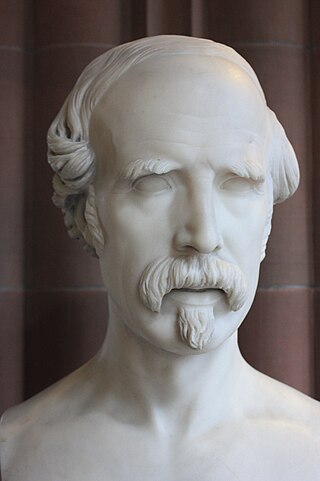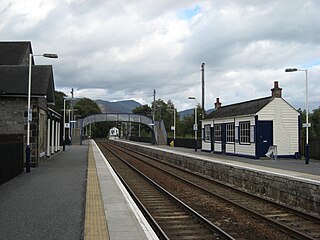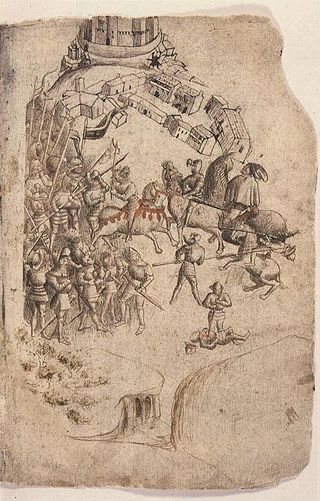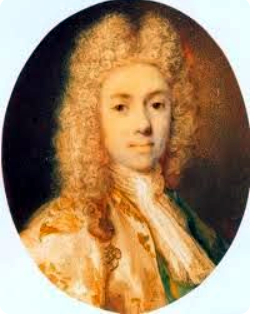
The British Armed Forces are the military forces responsible for the defence of the United Kingdom, its Overseas Territories and the Crown Dependencies. They also promote the UK's wider interests, support international peacekeeping efforts and provide humanitarian aid.

The Stone of Scone, is an oblong block of red sandstone that was used in the coronation of Scottish monarchs until the 13th century, and thereafter in the coronation of English and later British monarchs. The Stone measures 26 by 16.7 by 10.5 inches and weighs approximately 335 lb. A cross is roughly incised on one surface, and an iron ring at each end aids with transport. Monarchs sat on the Stone of Scone itself until a wooden platform was added to the Coronation Chair in the 17th century.

Perth and Kinross is one of the 32 council areas of Scotland, and a lieutenancy area. It is bordered by Highland and Aberdeenshire to the north, Angus, Dundee, and Fife to the east, Clackmannanshire to the south, and Stirling and Argyll and Bute to the west.

The Battle of Killiecrankie, also known as the Battle of Rinrory, took place on 27 July 1689 during the 1689 Scottish Jacobite rising. An outnumbered Jacobite force under Sir Ewen Cameron of Lochiel and John Graham, Viscount Dundee, defeated a government army commanded by General Hugh Mackay.

Clan Robertson, is correctly known as Clan Donnachaidh ( Duncan ) (Scottish Gaelic: Clann Donnchaidh) is a Scottish clan. The principal surnames of the clan are Robertson, Reid and Duncan but there are also many other septs.

Blair Atholl is a village in Perthshire, Scotland, built about the confluence of the Rivers Tilt and Garry in one of the few areas of flat land in the midst of the Grampian Mountains. The Gaelic place-name Blair, from blàr, 'field, plain', refers to this location. Atholl, which means 'new Ireland', from the archaic Ath Fhodla is the name of the surrounding district.

The Atholl Highlanders is a Scottish private infantry regiment. A ceremonial unit, it acts as the personal bodyguard to the Duke of Atholl, chieftain of the Clan Murray, a family that has lived in Perthshire for roughly seven centuries. Although it has no official military role, this hand-picked body of local men are armed with Lee–Metford rifles, and the regiment includes a pipe band. Joining the Highlanders is by invitation-only from the Duke, who specially selects men with ties to the estate or the local area. The regiment is not part of the British Armed Forces but under the command of the Duke of Atholl, and based at Blair Castle, Blair Atholl.

The Royal Scots Navy was the navy of the Kingdom of Scotland from its origins in the Middle Ages until its merger with the Kingdom of England's Royal Navy per the Acts of Union 1707. There are mentions in Medieval records of fleets commanded by Scottish kings in the twelfth and thirteenth centuries. King Robert I developed naval power to counter the English in the Wars of Independence (1296–1328). The build-up of naval capacity continued after the establishment of Scottish independence. In the late fourteenth century, naval warfare with England was conducted largely by hired Scots, Flemish and French merchantmen and privateers. King James I took a greater interest in naval power, establishing a shipbuilding yard at Leith and probably creating the office of Lord High Admiral.

John George Stewart-Murray, 8th Duke of Atholl,, styled Marquess of Tullibardine until 1917, was a British soldier and Unionist politician.

Katharine Marjory Stewart-Murray, Duchess of Atholl, DBE, known as the Marchioness of Tullibardine from 1899 to 1917, was a Scottish noblewoman and Scottish Unionist Party politician whose views were often unpopular in her party.

Lawrence Macdonald sometimes Laurence Macdonald was a Scottish sculptor.

Haulbowline is an island in Cork Harbour off the coast of Ireland. The world's first yacht club was founded on Haulbowline in 1720. The western side of the island is the main naval base and headquarters for the Irish Naval Service, with the eastern side previously used for heavy industry and later redeveloped as a park.

Dunkeld is a town in Perth and Kinross, Scotland. The location of a historic cathedral, it lies on the north bank of the River Tay, opposite Birnam. Dunkeld lies close to the geological Highland Boundary Fault, and is frequently described as the "Gateway to the Highlands" due to its position on the main road and rail lines north. Dunkeld has a railway station, Dunkeld & Birnam, on the Highland Main Line, and is about 25 kilometres north of Perth on what is now the A9 road. The main road formerly ran through the town, however following the modernisation of this road it now passes to the west of Dunkeld.

Clan Murray is a Highland Scottish clan. The chief of the Clan Murray holds the title of Duke of Atholl. Their ancestors were the Morays of Bothwell who established the family in Scotland in the 12th century. In the 16th century, descendants of the Morays of Bothwell, the Murrays of Tullibardine, secured the chiefship of the clan and were created Earls of Tullibardine in 1606. The first Earl of Tullibardine married the heiress to the Stewart earldom of Atholl and Atholl therefore became a Murray earldom in 1626. The Murray Earl of Atholl was created Marquess of Atholl in 1676 and in 1703 it became a dukedom. The marquess of Tullibardine title has continued as a subsidiary title, being bestowed on elder sons of the chief until they succeed him as Duke of Atholl.

Blair Atholl railway station is a railway station serving the town of Blair Atholl, Perth and Kinross, Scotland. The station is managed by ScotRail and is on the Highland Main Line, 35 miles 9 chains (56.5 km) from Perth, between Pitlochry and Dalwhinnie. There is a crossover at the north end of the station to allow trains to turn back if the line south to Pitlochry is closed.

Historically, Scotland has a long military tradition that predates the Act of Union with England in 1707. Its soldiers today form part of the armed forces of the United Kingdom, more usually referred to domestically within the UK as the British Armed Forces.
Chios was a Medea-class destroyer laid down for the Greek Navy by Fairfield Shipbuilding and Engineering Company, Govan in 1914. She was launched as 16 December 1914 and completed for service in the Royal Navy as HMS Melampus on 29 June 1915. On 16 April 1917 she accidentally rammed and sank the C-class submarine C16. She was sold for breaking up on 22 September 1921.

Warfare in Medieval Scotland includes all military activity in the modern borders of Scotland, or by forces originating in the region, between the departure of the Romans in the fifth century and the adoption of the innovations of the Renaissance in the early sixteenth century. In this period conflict developed from minor raids to major conflicts, incorporating many of the innovations of continental warfare.

William Murray, Marquess of Tullibardine was a Scottish nobleman and Jacobite who took part in the rebellions of 1715, 1719, and 1745.
Charles d’Orville Pilkington Jackson RSA, FRBS, FRSA was a British sculptor prominent in Scotland in the 20th century. Throughout his career he worked closely with the architect Sir Robert Lorimer. He is most noteworthy for his creation of one of Scotland's most iconic landmarks, the statue of Robert the Bruce at Bannockburn.




















